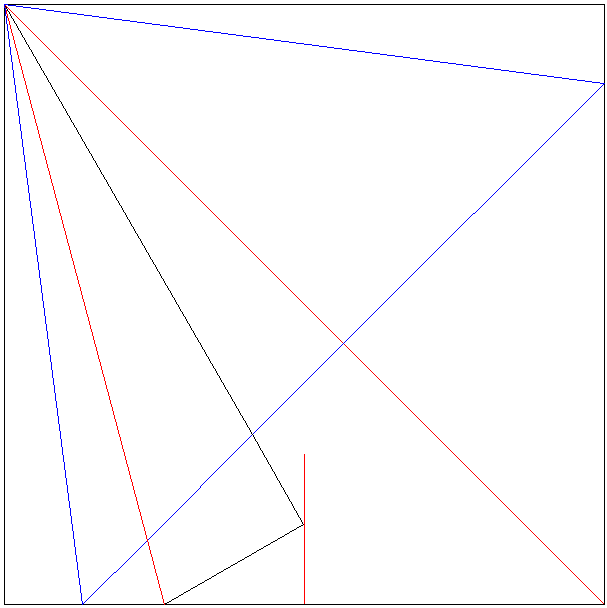I can't figure out how to solve this problem
After that, I have another math problem for my pyramid box. I hope I can count with your help with that one as well, but let's start with this one
PS: Am I using "in" and "on" correctly?

Thank you very much Euthym!Euthym wrote:Here you know all the angles and a length, so you can use the sinus rule multiple times, but also Pythagoreans theorem once you know another lenght. We have a triangle ABC, with A=90°, B=10°, C=80°. Using the sinus rule we can calculate that the bottom of the left triangle is 1,76 cm. So the triangle on the right must have 2 lenghts of 10-1.76cm=8.24. Using the pythagorean theorem ce can calculate that y=11.65cm
Oh, now I understand what you mean BaltorigamistBaltorigamist wrote:Gerardo -> For the 75deg example, 90 - 75 = 15--and a 15deg angle is easy to construct. You'd simply mark out 1/2 of the bottom edge and fold through the upper left corner such that the bottom corner touches the 1/2 mark.
Note that this gives you a 75deg angle from the top edge--not centered along the main diagonal--but you just need to bisect the 15deg angle and repeat in mirror image on the top edge.
That helped a lot Baltorigamist! Now, I'm confused about something. Someone in some other website explained the exact same process, but using the tangent instead of the sine. How is it possible that two different functions work following exactly the same processBaltorigamist wrote:All you need to do is calculate the sine of the smaller angles (in degrees) of the triangles and multiply that by the side of the square.
For the 75deg example, (90-75)/2=7.5 degrees. Sin(7.5) is about .1305, which means the bottom left triangle has a base of .1305 times the side of the square, or 1.305cm. Subtracting that from the 10cm side length leaves us with 8.695cm for the short side(s) of the bottom right triangle. Multiply that by sqrt2, or ~1.41421, for the total hypotenuse length.
The 70deg example can be done by following the same steps (but using sin(10) instead of sin(7.5)).
OK, I got that we are now concentrated on a small right triangle on the bottom right. After that, I don't understand at all what's going onBaltorigamist wrote:The base:hypotenuse ratio of the triangles is 2.1:3.65 (or about 1:1.74), so we need to divide 2.9 into that proportion. To do that, we add the two parts together and divide 2.9 by the result: 2.9/2.74=~1.058. Multiplying that by 1.74 gives the hypotenuse of the smaller triangle (a in your example) as 1.841cm. The value of b, then, is (2(1.058+2.1)), or a little less than 6.32cm.
And also...Baltorigamist wrote:Having the desired ratio in simplest terms means that dividing 2.9 by the sum of the proportions (in this case, 2.74) will give me one side of the proportion directly
Can you please argue these statements?Baltorigamist wrote:I just need to multiply the result (1.058) by the rest of the proportion to find the second part of the ratio [the hypotenuse of the small right triangle on the bottom right].